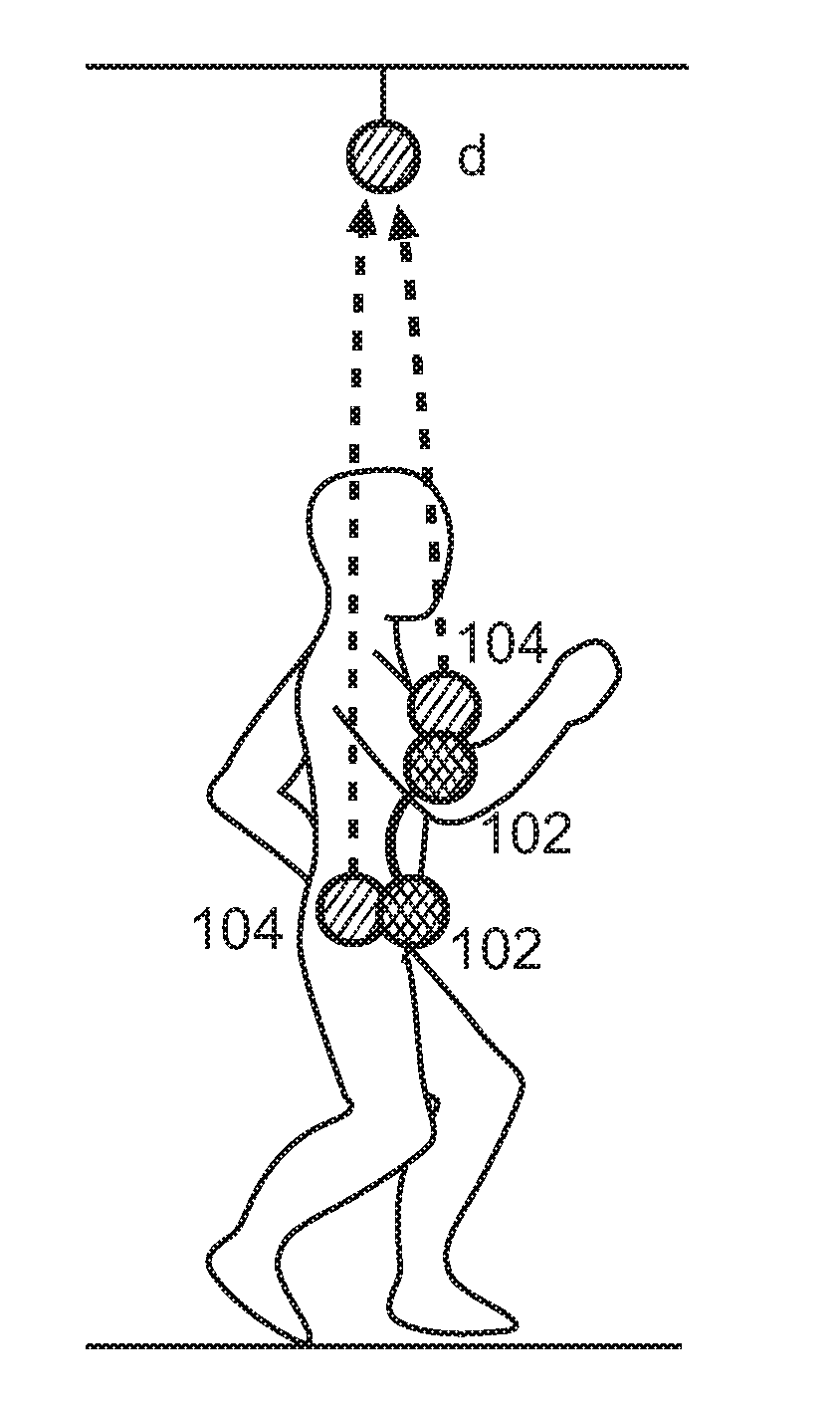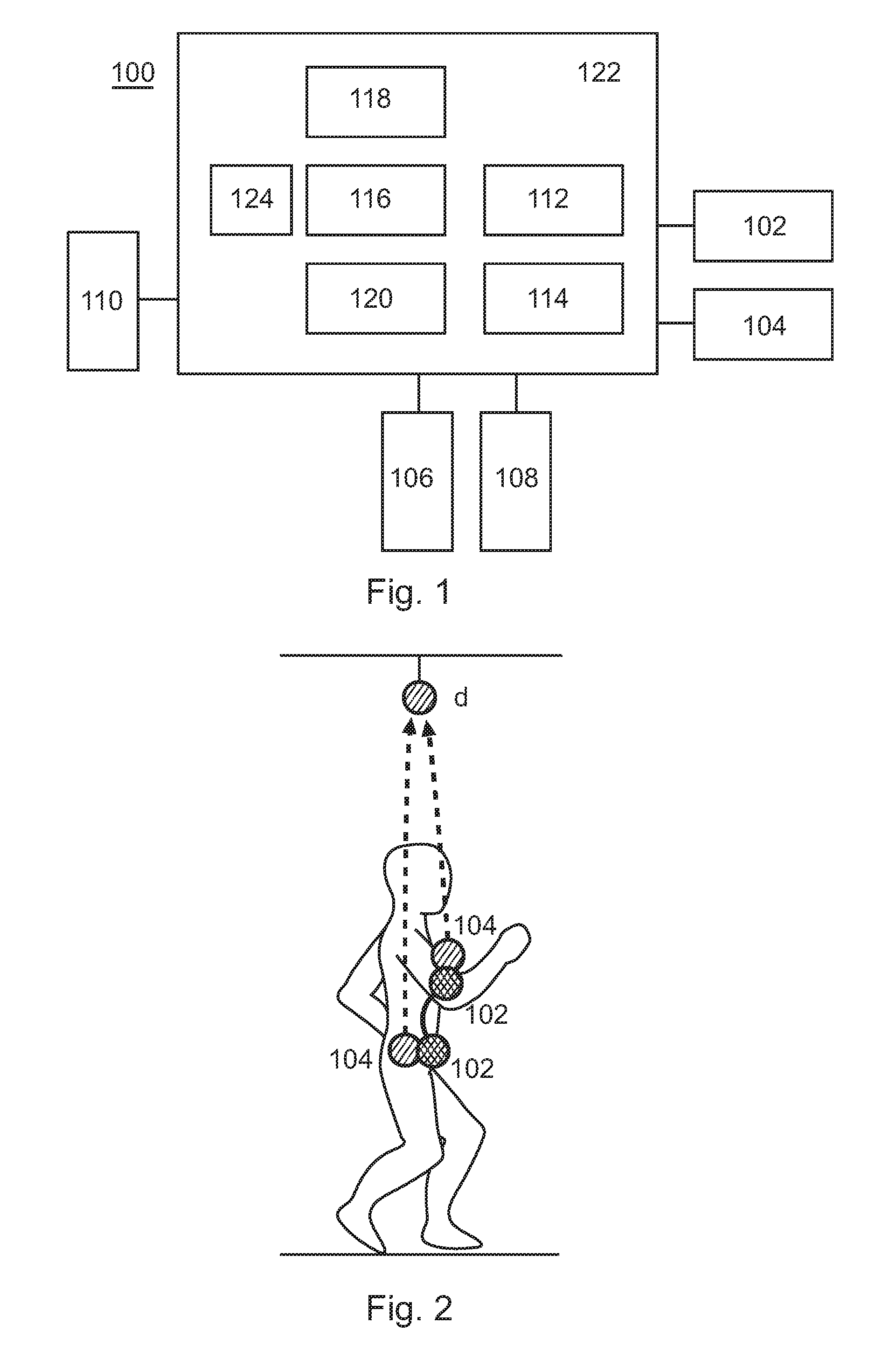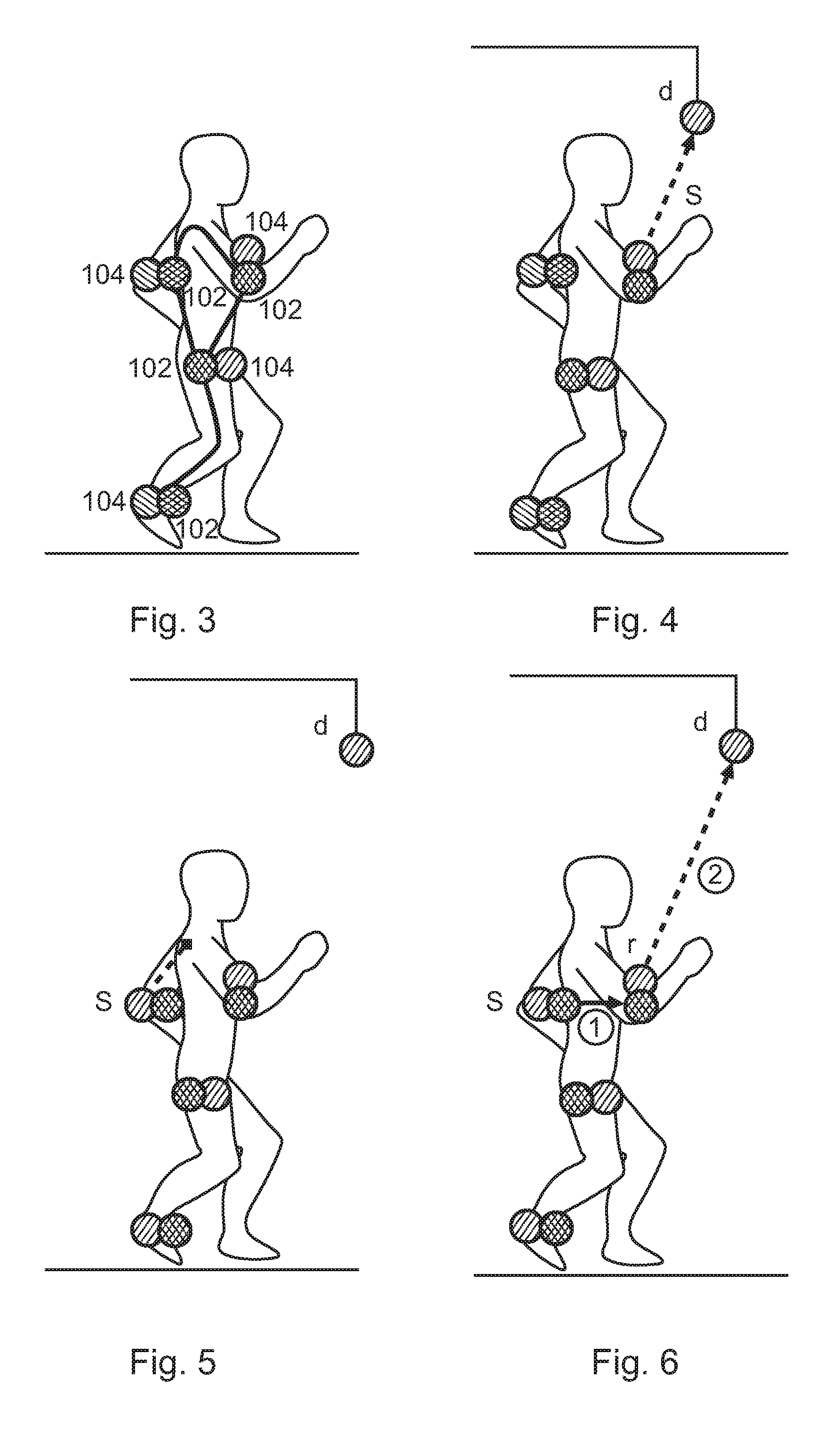Combining body-coupled communication and radio frequency communication
a radio frequency communication and body-coupled technology, applied in electromagnetic wave modulation, instruments, applications, etc., can solve the problems of unreliable communication, inconvenient operation, and only possible communication, and achieve the effect of improving the quality of radio frequency link
- Summary
- Abstract
- Description
- Claims
- Application Information
AI Technical Summary
Benefits of technology
Problems solved by technology
Method used
Image
Examples
first embodiment
[0068]FIG. 1 shows a schematic block diagram illustrating an exemplary arrangement of a device 100 according to a The device 100 may be some kind of sensor platform or sensor device, even if no sensors have to be attached to it. It can comprise a body-coupled communication (BCC) unit 102, a radio frequency (RF) communication unit 104, a first sensor unit 106, a second sensor unit 108, a power supply 110, a processor or processing unit 112, a determining unit 114, a memory or storing unit 116, a modifying unit 118, and a comparing unit 120. The processing unit 112, the determining unit 114, the storing unit 116, the modifying unit 118 and the comparing unit 120 may be part of a microcontroller 122 or other component. Further, the microcontroller 122 can have the functionality of one or more of these units, so that they may not exist as separate components. If it has this functionality, it can process an application as well as a communication protocol stack. Moreover, two or more of ...
second embodiment
[0119]FIG. 11 shows a flowchart illustrating an exemplary procedure for on-body and off-body communication according to the An on-body device that wants to send a message to another device identified by its address can perform the following steps:[0120](1) After starting the procedure in a step S1100, the on-body device may check in a step S1102 whether the destination is an on-body device, by inspecting the first list 124. This can be done e.g. by the processing unit 112 that can check in the first list 124 stored in the storing unit 116 whether there is an entry for the destination. If the destination is an on-body device, then in a step S1104 the message may be directly sent via BCC, i.e. by means of the BCC unit 102, to the destination (illustrated in FIG. 12).[0121](2) Otherwise, the on-body device can inspect the second list 126 in a step S1106 to determine whether the destination is listed in this off-body table. This may be done e.g. by the processing unit 112 that can chec...
PUM
 Login to View More
Login to View More Abstract
Description
Claims
Application Information
 Login to View More
Login to View More - R&D
- Intellectual Property
- Life Sciences
- Materials
- Tech Scout
- Unparalleled Data Quality
- Higher Quality Content
- 60% Fewer Hallucinations
Browse by: Latest US Patents, China's latest patents, Technical Efficacy Thesaurus, Application Domain, Technology Topic, Popular Technical Reports.
© 2025 PatSnap. All rights reserved.Legal|Privacy policy|Modern Slavery Act Transparency Statement|Sitemap|About US| Contact US: help@patsnap.com



